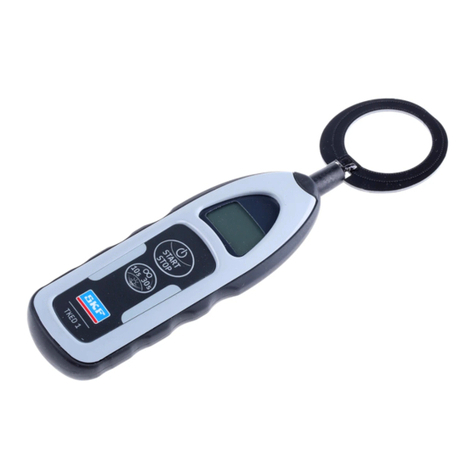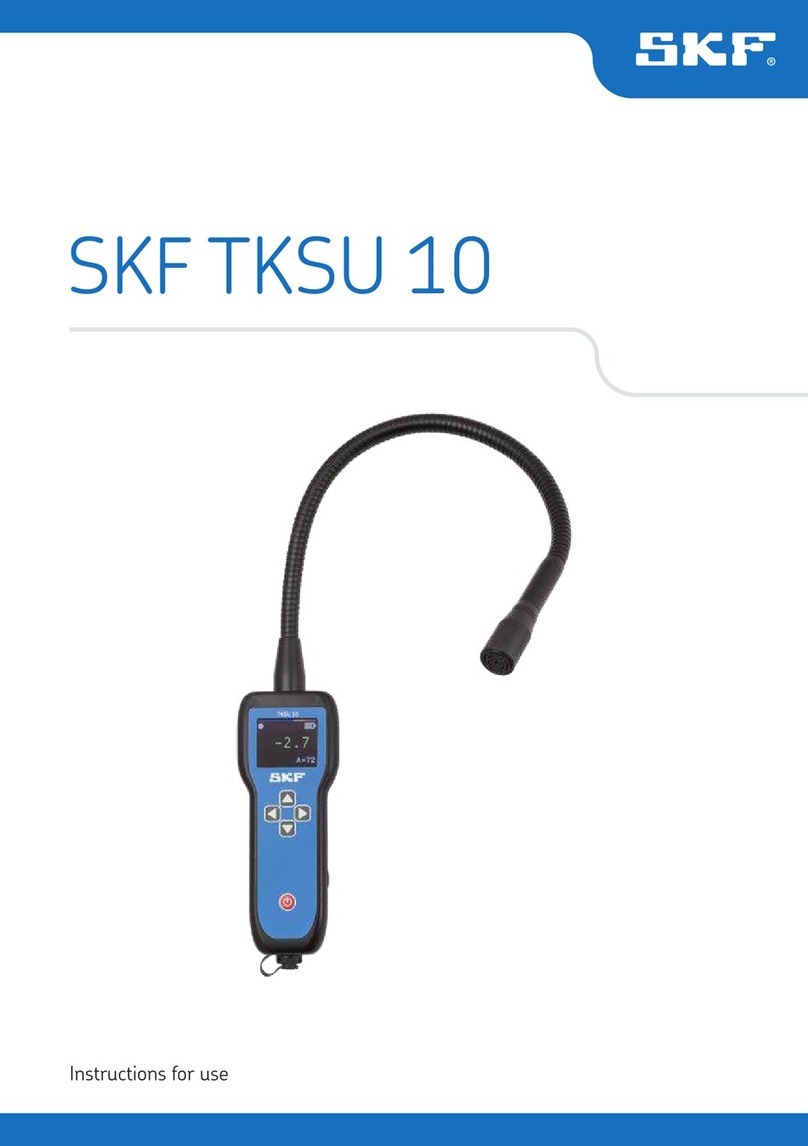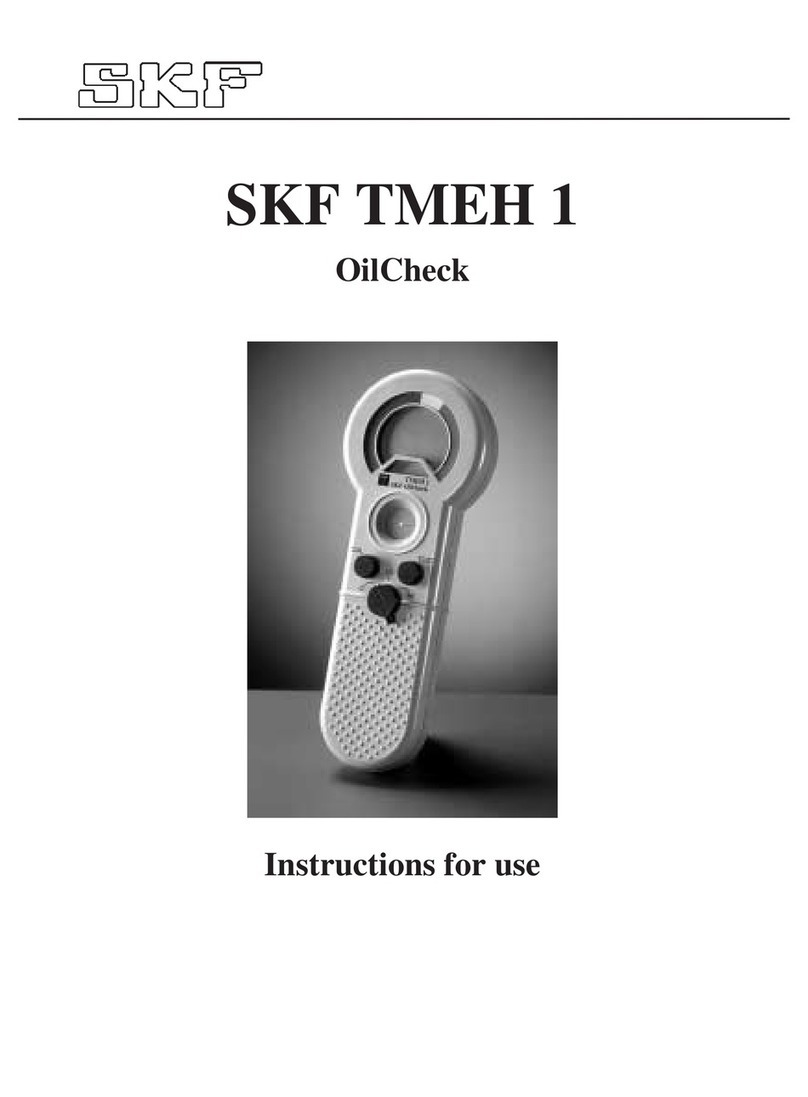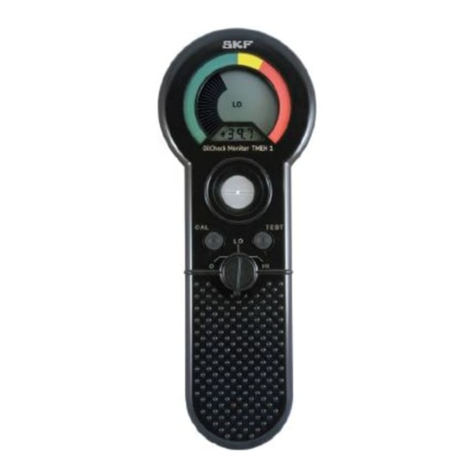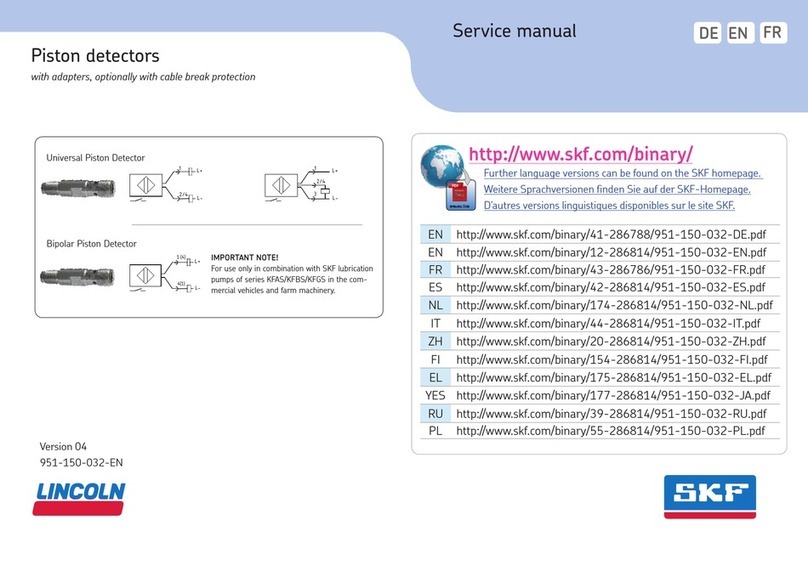
6SKF TMSU 1
4. Operation
• For listening comfort while performing a leak survey, the fingertip volume control
gives instant and precise adjustment to instrument sensitivity for more effective and
safe inspections.
• The ultrasonic sensor is mounted at the end of a flexible metal tube. This tube can
be bent and twisted in multiple directions. Its diameter is small enough to perform
inspections through tight access holes and inside cabinets. A precision focus tube
is mounted over the sensor to increase the accuracy of detection and eliminate
parasitic noise.
• A red LED shows the unit is operational. If the LED does not illuminate check that
the batteries have sufficient power, and replace if necessary.
4.1 Non-continuous operation
• Slide the small switch on the right side of the unit up to the top.
• Maintain pressure on the centre of the yellow button to keep the
unit operating.
• To increase the volume (sensitivity) of the TMSU 1 push the (+) side of
the yellow button. When the desired sensitivity is reached hold the entire
button in the down position to begin your survey. Leaks are generally
found by moving the detector back and forth and up and down in the
direction of the leak source.
• As soon as you hear the typical “hissing” sound of a leak move towards the source.
Remember that ultrasounds travel through the air in a directional pattern. The
source of the leak is therefore easy to pinpoint by following the loudest signal.
• As you near the source of the leak the volume in the headphones may increase
dramatically. Reduce the sensitivity of the detector by pushing the (-) side of the
yellow button to return the TMSU 1 to a comfortable listening level.
• To turn off the detector, release the yellow button.
4.2 Continuous operation
• Slide the small switch on the right side of the unit down to the bottom,
The LED will light up.
•
To increase the volume (sensitivity) of the TMSU 1 push the (+) side of the
yellow button. When the desired sensitivity is reached release the yellow
button and begin your survey. Leaks are generally found by moving the
detector back and forth and up and down in the direction of the leak source.
• As soon as you hear the typical “hissing” sound of a leak move towards the source.
Remember that ultrasounds travel through the air in a directional pattern. The
source of the leak is therefore easy to pinpoint by following the loudest signal.
• As you near the source of the leak the volume in the headphones may increase
dramatically. Reduce the sensitivity of the detector by pushing the (-) side of the
yellow button to return the TMSU 1 to a comfortable listening level.
• To turn off the detector, slide the switch at the side to the top to halt operation.
The LED will go out.

